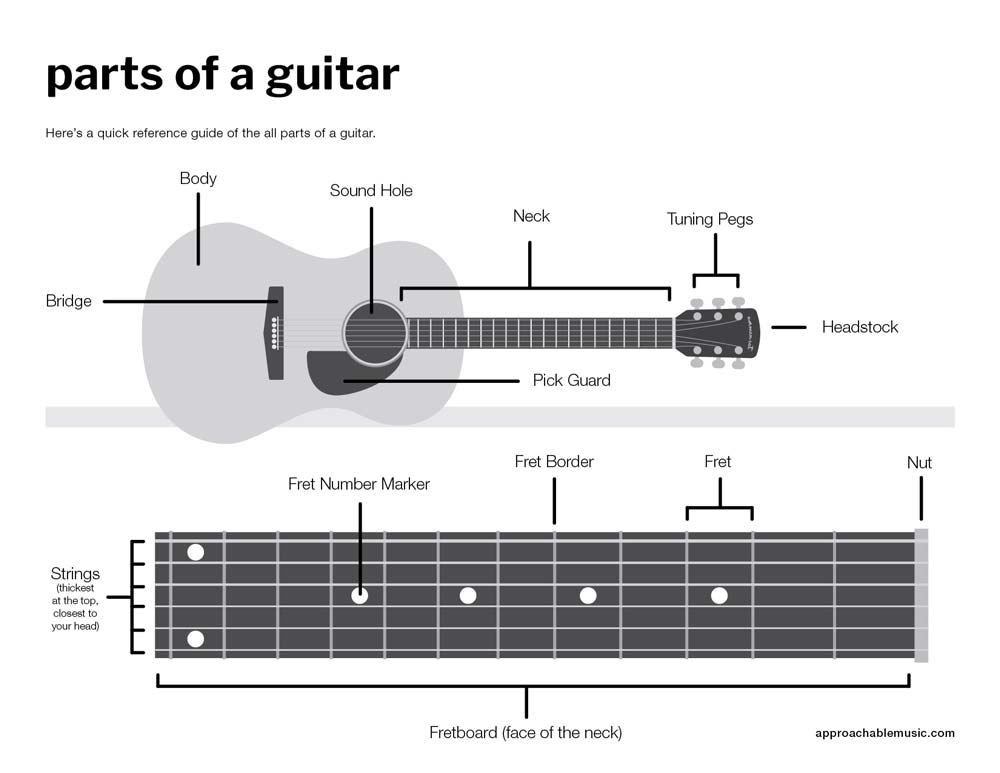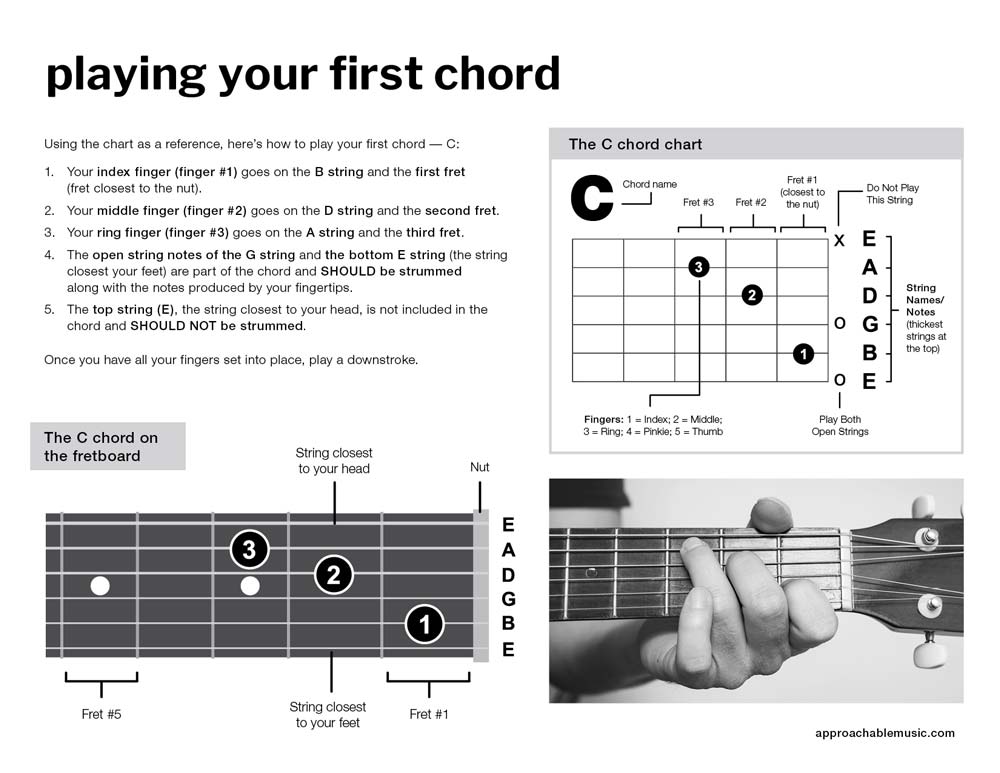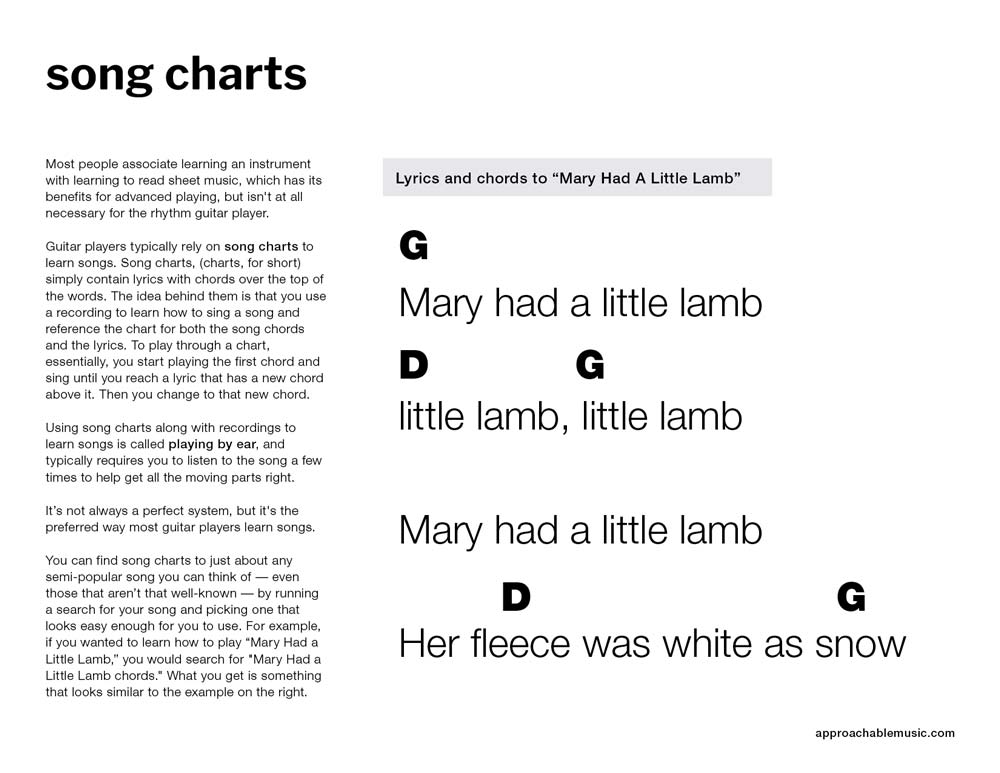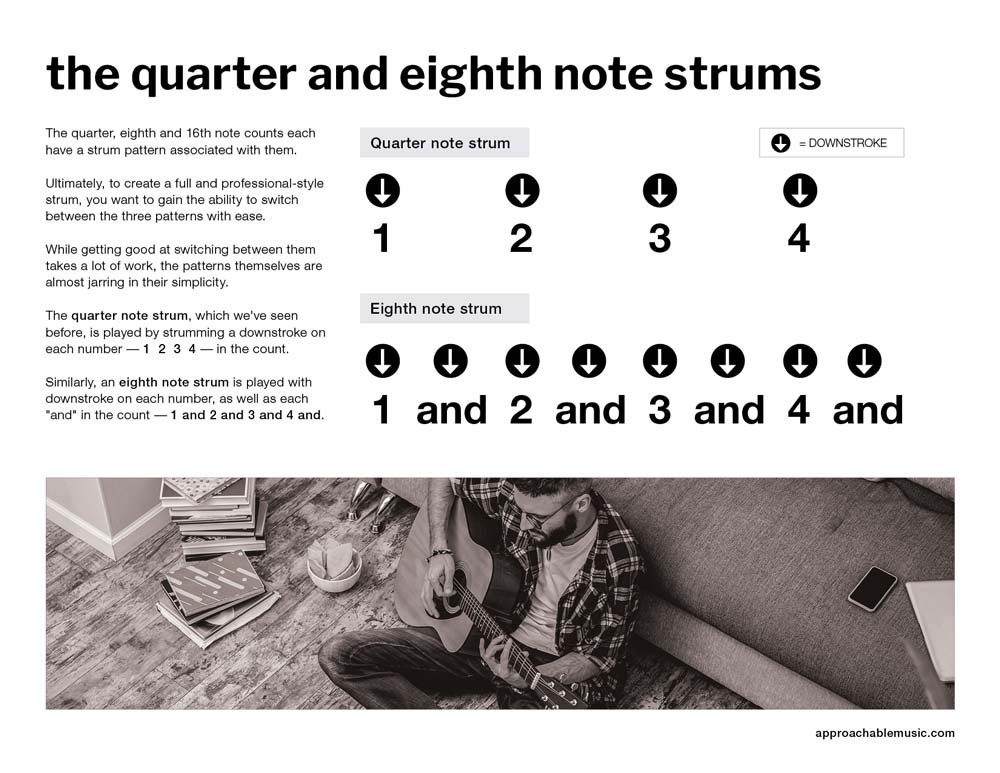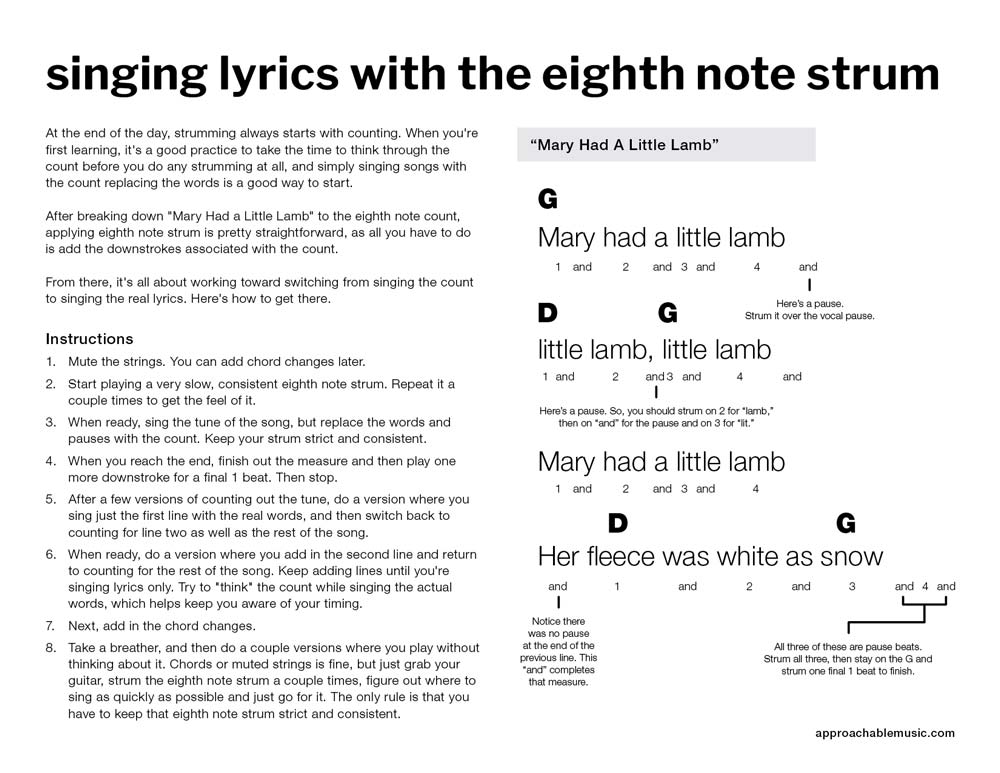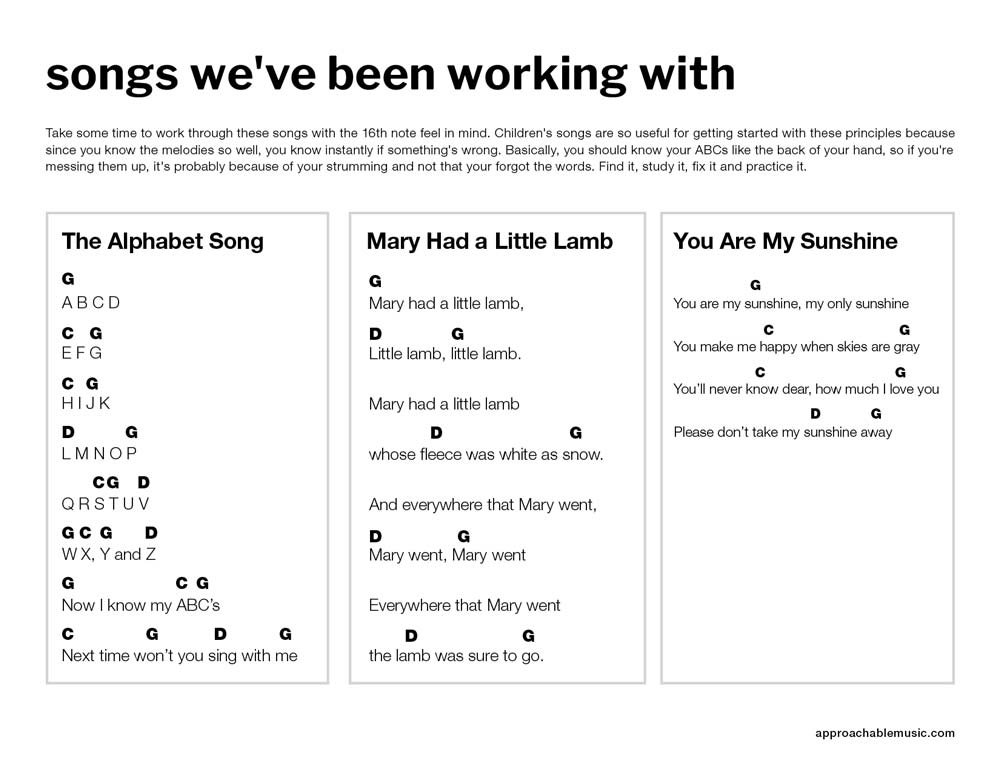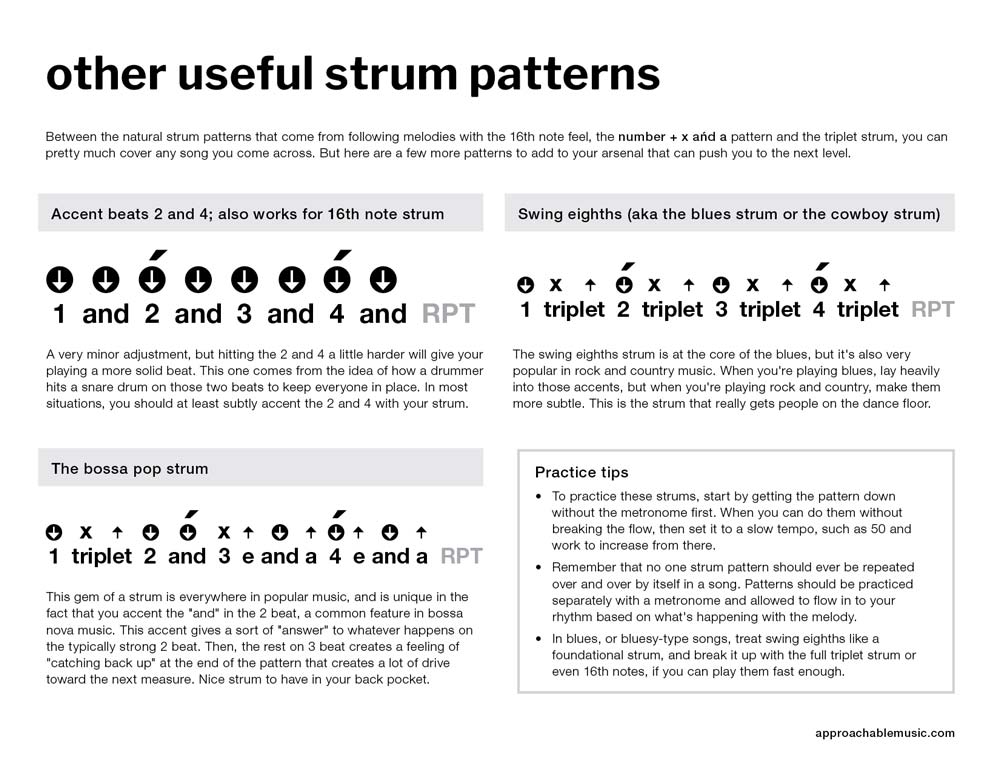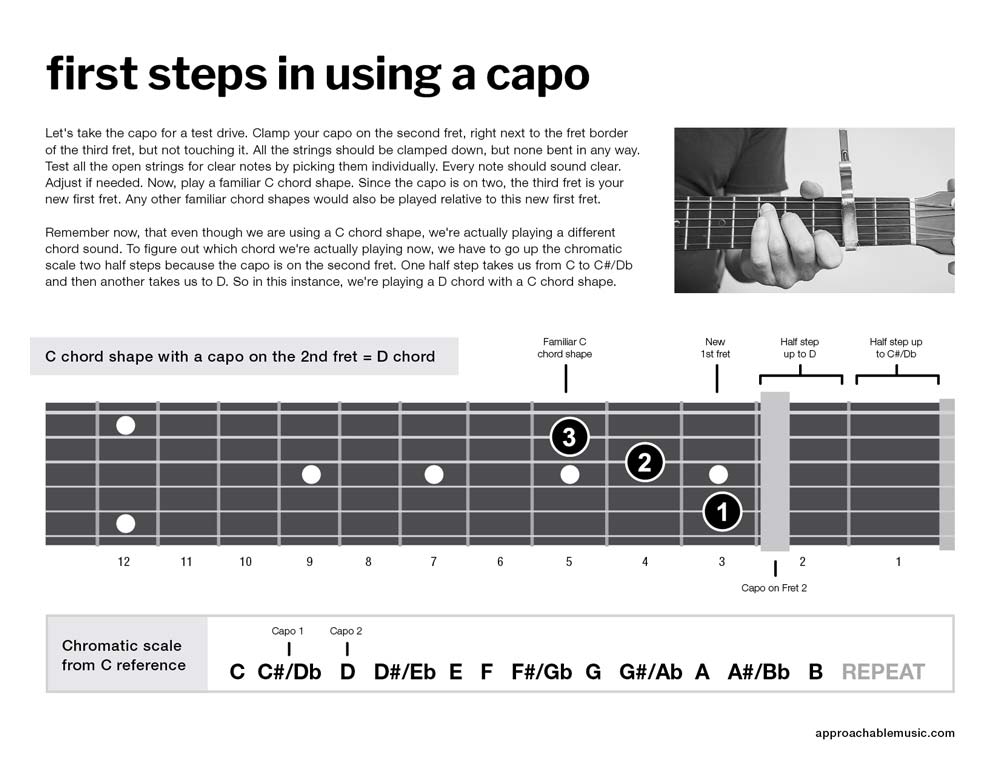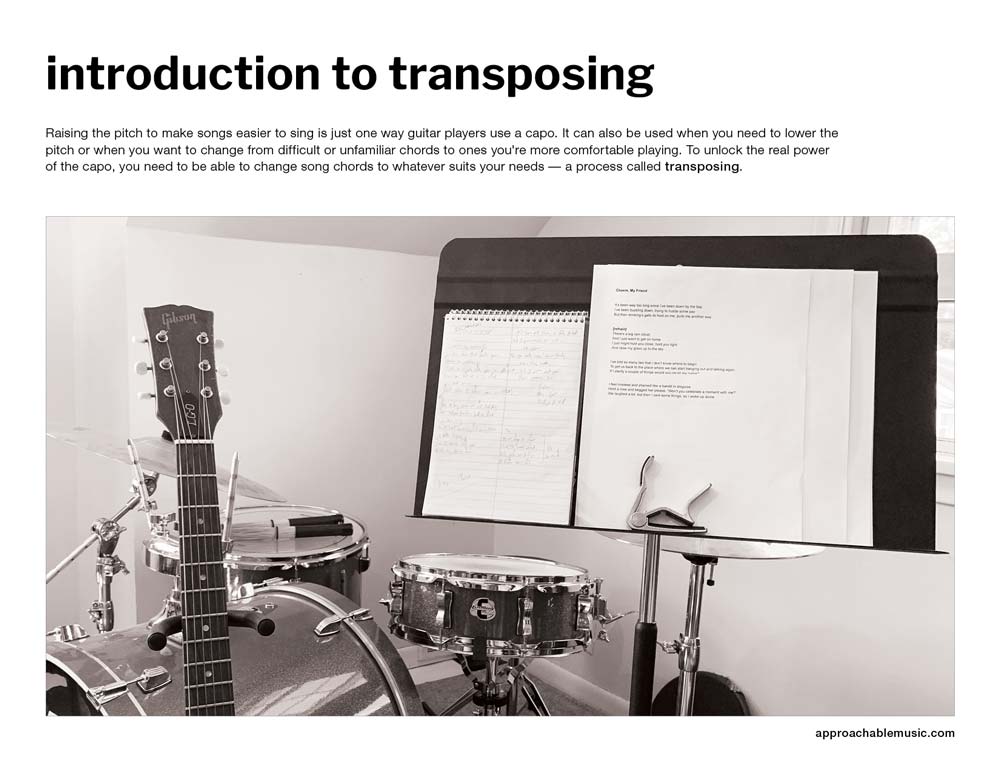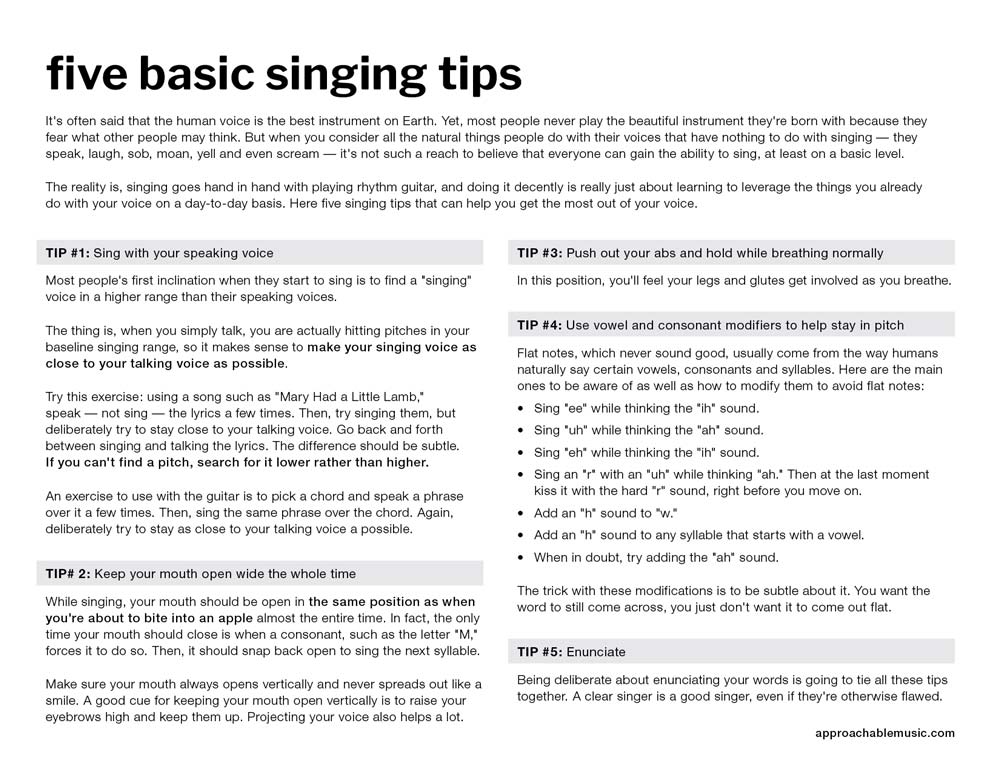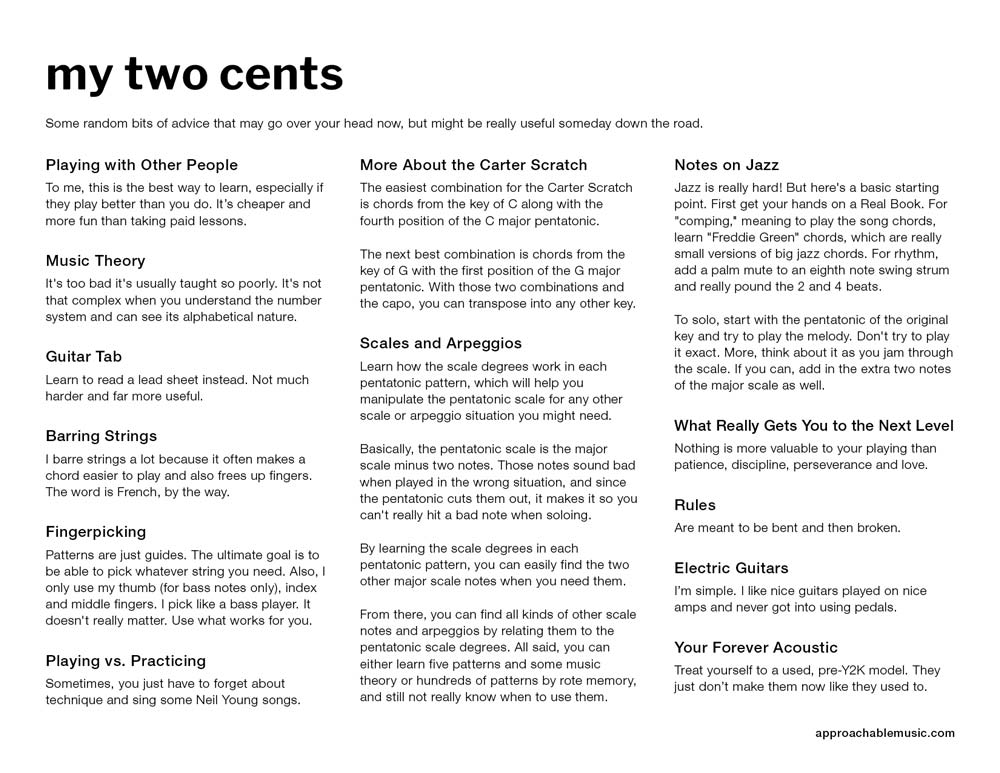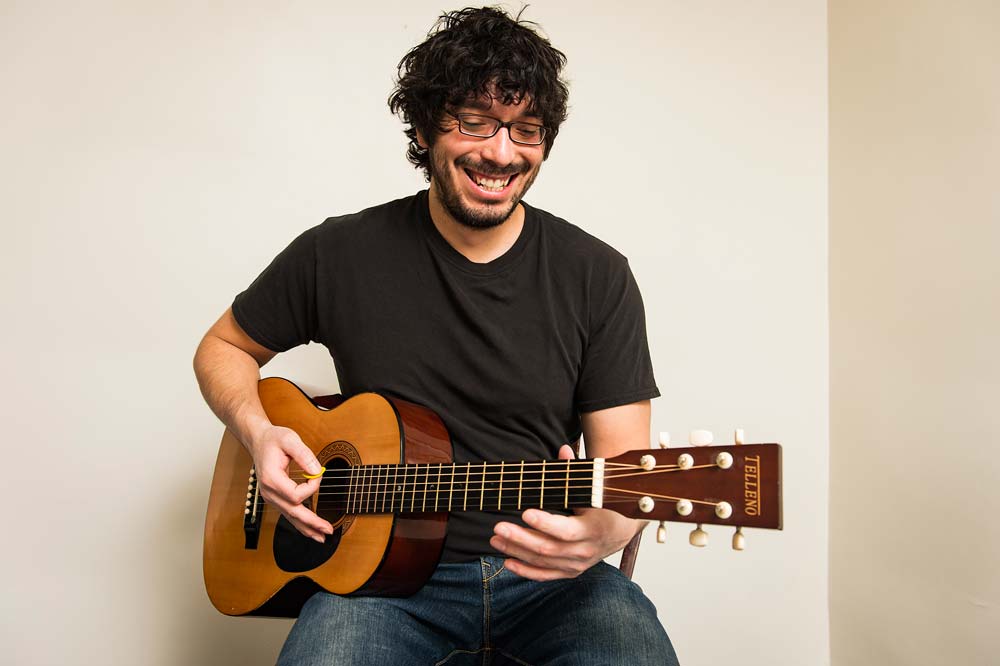What You'll Learn in the Beginner Guitar PDF
In this book, you'll learn how to get started with playing songs. Gaining the ability to sing and play at the same time is the most important skill for a basic level of guitar proficiency. In fact, if you have been messing around with the guitar for a while and can't play a song and sing it all the way through, you realistically should stop everything else you're practicing and learn how to do it as soon as possible.
This skill is more commonly known as playing rhythm guitar, and it's the foundation for any other non-classical, advanced technique.
Why This Beginner Guitar Book Works
In general, you don't have to be interested in becoming good at singing, but you have to gain the coordination to use your voice while you play. This book teaches how to do that.
It will even suffice to simply whisper along with your playing, as you'll still be making the necessary connections between the words you're saying and the actions your hands are actually making on the instrument.
Strumming
Strumming is the foundation of playing rhythm on guitar. When it's all said and done, a strum is basically an up and down pick hand motion used to play the strings over the sound hole. It's made up of two motions: the downstroke and the upstroke. For either stroke, it's a quick strike designed to catch all the intended strings so it sounds as though they are all being played simultaneously. A downstroke is pretty self-explanatory; you start at the top of the sound hole and strike downward toward the bottom of the sound hole. To do an upstroke, you go the opposite way.
For now, you don't even have to worry about the upstroke. They're more complicated and not even necessary in the beginning. Here's how to get started with downstrokes.
Chords
If you take your pick and pluck any open string, the sound you made corresponds to a note name. You can also play a note by using a chord hand finger to press down a string between any two fret borders, and then plucking the same string with your pick hand. If you play two notes or more together at the same time, you've played a chord. Guitar players use chords and strumming together to play songs.
Learning how to play guitar chords is the most important thing beginners need to know for proficiency. Even though there is an endless possibility of chords on the guitar, most songs require you to switch through a only few, in rather repetitive fashions.
Switching Chords on a Count
Whether you play nursery rhymes or complicated jazz songs, guitar playing can ultimately be boiled down to one principle: you switch through chords according to a count.
Any sequence of chords you're tasked with switching through is called the chord progression. Most commonly, we switch through chord progressions using a count of four, repeated over and over again. For example: 1 2 3 4 1 2 3 4, repeat until done. The numbers in a count are referred to as beats.
The easiest way to start connecting chords on a four count is to switch to the next chord in progression every time you reach a 1 beat.
Playing Songs
At the end of the day, songs are just words sung over strummed chord progressions. As soon as you can read a chord chart and play a few chords, you can start trying to play songs. In fact, the sooner you start to fumble through songs the better because that's when you can began connecting the skills you're practicing to their actual use.
Most people associate learning an instrument with learning to read sheet music, which has its benefits for advanced playing, but isn't at all necessary for the rhythm guitar player.
Guitar players typically rely on song charts to learn songs. Song charts, (charts, for short) simply contain lyrics with chords over the top of the words. The idea behind them is that you use a recording to learn how to sing a song and reference the chart for both the song chords and the lyrics. To play through a chart, essentially, you start playing the first chord and sing until you reach a lyric that has a new chord above it. Then you change to that new chord.
Using song charts along with recordings to learn songs is called playing by ear, and typically requires you to listen to the song a few times to help get all the moving parts right.
It's not always a perfect system, but it's the preferred way most guitar players learn songs.
You can find song charts to just about any semi-popular song you can think of — even those that aren't that well-known — by running a search for your song and picking one that looks easy enough for you to use. For example, if you wanted to learn how to play "Mary Had a Little Lamb," you would search for "Mary Had a Little Lamb chords." What you get is something that looks similar to the example on the right.
The easiest and most effective way to start playing guitar and singing at the same time is to use the tune of the song, also known as the melody, as your guide.
This approach works best because there is rhythm built in to each melody, and dialing into it helps better connect your strum to the unique characteristics of each song.
To start, let's learn how to play and sing "Mary Had a Little Lamb."
First, before you touch the guitar, sing the song as you know it, at least in your head. Take special note where all the little pauses are.
Then, using the "Mary Had a Little Lamb" song chart, place a G chord and sing the song exactly as you know it while strumming a single downstroke as you sing each syllable. Work slowly, change chords on the appropriate syllable and don't play anything during the natural pauses of the tune. Don't rush the pauses. There should be no difference between how you sing it in your head and how you sing it with the guitar, except the fact that you're adding the instrument.
For example, here's how the first line should go:
(Using a G chord, play a downstroke as you sing) Ma- (then...)
(Stay on G and play a downstroke as you sing) -ry (then...)
(Stay on G and play a downstroke as you sing) had (then...)
(Stay on G and play a downstroke as you sing) a (then...)
(Stay on G and play a downstroke as you sing) lit- (then...)
(Stay on G and play a downstroke as you sing) -tle (then...)
(Stay on G and play a downstroke as you sing) lamb (wait for the pause, and then...)
(Switch to D and play a downstroke as you sing) lit- (then...)
(Stay on D and play a downstroke as you sing) -tle (then...)
(Stay on D and play a downstroke as you sing) lamb (wait for the pause, and then...)
(Switch back to G and play a downstroke as you sing) lit- (etc.)
Continue on to the end of the song. Repeat until comfortable.
This one downstroke per syllable method will work with any song, and will help you get up and running with playing songs on the guitar quickly.
Practice
Up to this point, we've centered in on two main skills: switching chords according to a four count and playing songs with the one downstroke per syllable method. Getting used to switching chords on a count helps build your sense of timing and serves as the foundation for solid strumming technique. Playing songs helps you apply chords in a practical way.
Eventually, both skills converge, but the easiest way to work on them in the beginning is separately. Here's your formula for practicing these skills. Pick an amount of time you can reasonably practice for everyday. Even if it's just two minutes, that's perfectly fine as long as you do it everyday. Split the time in two and set a timer for the first half. For the first half, work on switching chords according to a four count. When the timer goes off, stop, and take whatever break you need. Then, set the timer for the other half and work on playing songs. When the timer goes off, you're officially done with your practice for the day.
If you feel like putting in extra work, do it with the timer off and for as long as you want — but extra time doesn't preclude you from tomorrow's time. Practice is more about consistency than amount of time. Start with a small amount of time, and increase modestly as you outgrow it. If you miss a day or even more, just get back on track when you can. Don't worry or quit over it!
Learning New Chords
As you search for songs, you'll find that you're going to need a lot of different chords. The thing about learning chords though, is that there are tons of them, which makes it tough to focus on the ones you really need.
So, here's the little secret about chords that makes them much easier to practice: most songs can typically be played from a pool of about 16 chords, using 3-5 at a time. Learn those 16 chords like the back of your hand, and you won't have to learn many more for at least a few years.
Of course, being ready to expand your chord library is also a good sign that you've outgrown the one downstroke per syllable method of playing and singing songs, so it's time to start working toward a polished and professional-style strumming approach.
The Importance of Rhythm
Rhythm is the backbone of music. It gives chords and melodies a structure that drives people to sing, dance, tap their feet or bop their heads. It's such an important part of guitar playing that realistically, you're better off playing a wrong chord than messing up your strum. Most people completely miss it when you hit bad notes, but when the flow of a song breaks — its rhythm — it's painfully obvious.
Learning to play good rhythm on your guitar starts with being able to count like a musician. Most of the time, a song is built with multiple counts of four repeated one after the other until the end. A full count of four — 1 2 3 4 — is called a measure or bar, terms that are used interchangeably.
A very typical song, for instance, might have 32 bars and be counted in four. That means from start to finish, a musician counts to four 32 times. Add in chord changes, lyrics and fast tempos, and counting to four over and over can become quite challenging.
Guitar players play rhythm by strumming, and if you learn how to strum optimally over a four count and practice doing it ad nauseam, it eventually happens automatically through intuition and muscle-memory.
Basic Strum Patterns
The quarter, eighth and 16th note counts each have a strum pattern associated with them.
Ultimately, to create a full and professional-style strum, you want to gain the ability to switch between the three patterns with ease.
While getting good at switching between them takes a lot of work, the patterns themselves are almost jarring in their simplicity.
The quarter note strum, which we've seen before, is played by strumming a downstroke on each number — 1 2 3 4 — in the count.
Similarly, an eighth note strum is played with downstroke on each number, as well as each "and" in the count — 1 and 2 and 3 and 4 and.
While all three strums require you to be comfortable with the downstroke motion on the guitar, unlike both the quarter and eighth note strums, the 16th note strum involves the upstroke motion as well. An upstroke is simply the reverse action of a downstroke.
To try one out, use a G chord and play a downstroke. When you reach the bottom of the stroke, come back up, reversing all the actions you made to do a downstroke. Make sure to hit all the strings on the way up, and do the upstroke fast enough to make playing all six strings sound like they are being played simultaneously. Go up and down a few times, and while you're getting comfortable with the motion, think about how on a trampoline, each time you reach the bottom, you're already practically on the way up — it's all one seamless motion. That's how your up and down strumming motion should be.
For the 16th note strum — 1 e and a 2 e and a 3 e and a 4 e and a — play downstrokes on each number and each “and.” Play upstrokes on each "e" and each "a."

